
Over the weekend, a 70-year-old Black elder and member of the Community of Practice that I co-chair for my local Baha’i[i] community declared that he was free. He explained that among those in the room, he was the lone retiree at liberty to speak truth publicly about the cultural differences that people allow to divide themselves. The rest of us, he said, were bound by our need to earn livelihoods that may likely be compromised if we offended others with the truth of how difference is treated with discrimination. Indeed, like my mother before me, I have been marked a "cultural 'mis-fit'"[ii] in the workplace and lost employment because I represented difference among my colleagues. It’s true that heads tend to turn and lips seal when there is culture-based conflict in our workspaces. While many are competent at the work they do, they may not recognize, know how to effectively manage, or think it their place to reconcile “creative differences” that are at their root natural chances to skill-build toward collaborative working. Yet, let us remember: Culture is meant to make the world around us—and one another—more accessible. It's an adaptation that humans make to their environments in order to make meaning and feel connected in their shared beliefs, values, assumptions and behaviors. We are most free in our being bound together because engaging between our differences with others allows us to move more easily in our worlds. Accepting that which binds me has liberated me. From the age of six, I refused to buy the U.S. brand of liberty that we were sold. I kept silent every morning in class as my peers recited the concluding words of our national pledge of allegiance: “…with liberty and justice for all.” I knew that the flag under which I stood did not represent one nation indivisible, yet I was not aware of the freedom that binding in struggle with one another brings. I had not yet experienced what one Australian aboriginal woman affirmed when she said, “…[I]f you have come because your liberation is bound up with mine, then let us work together” (Aboriginal activists group, Queensland, 1970s[iii]). When we participate in the collective and continuous labor of acculturating ourselves with the patterns of how we and others work, we learn the skills of working across culture with anyone, anywhere.
We are most free in our being bound together because engaging between our differences with others allows us to move more easily in our worlds. And, while it may not feel intuitive, the culture that we create for the places that we occupy—work teams, organizations, networks, communities--can effectively facilitate an experience in which we are free to be/come the full potential of ourselves, collaborate with others in ways that enhance our shared value and carry out the work of the day with meaningful and sustained impact. What other freedom supplies more people power? Virtually yours, Malii Brown
1 Comment
 For me, there’s magic in the way that drivers make way on the road when they hear the blare of an ambulance. In the culture of Chicago traffic—where my attempts to merge seem to come off as a declaration of war to some drivers—what happens when people hear and heed the call of an ambulance siren feels like witnessing peace on earth! The act symbolizes the value that we hold in others’ lives over our own agendas. More important to me than whether people feel sentiments that seem to match their actions, is whether people act in alignment with value. As an Intercultural Trainer & Consultant, my job is to support progressive shifts in behavioral change toward values that people agree to work within. While beliefs may change over time through self-discovery, influencing attitudes is not something for which I take responsibility. If we imagine a world where people prioritize others, it’s a basic “rule of the road” that we act in parallel to what makes way for what we say we value: One another. "Making way" is about both recognizing that we are one part of one whole and then operating in that reality. Making way when we really feel like someone needs to “stay in their own lane,” is not about allowing them space. It’s about both recognizing that we are one part of one whole and then operating in that reality. Making way is an intentional decision to make meaning of mission by demonstrating the behavioral interpretations that match your values of service, team, leadership, diversity, etc.
For example: Over the past year, I have trained for Daimler[i] in a set of intercultural competence trainings. A worldwide rollout of trainings has been put in motion proactively to support knowledge transfer processes from various sites globally to the Philippines. At one of these recent trainings that I facilitated in Toronto, it took more time than participants anticipated to follow my instruction to “simply” self-identify and stand together as either Filipinos or Canadians. (Between you and I: It was a bit of a “set up”!) Filipino participants who had flown in from Cebu a few days before, quickly and easily took their place together. One of the managers from the Cebu team even offered to stand with a German expat who had called Canada home for the last two decades and didn’t quite identify as a local. And then…we waited…and watched. We made way for the process of the remainder of the group as they questioned, discussed and debated the extent to which they identified as Canadian among the employees with whom they worked side-by-side daily. The national dialogue about what makes one Canadian played out before us. In the process, the learning emerged: Our global—and local—work is now more complex because we have become more multidimensional. Making way breathes life into the living values of any group, and thereby increases the value of the group to cooperate well within the complexity they work. What values do you think were reflected in our making way? If you have imagined a world of interconnectedness, you need not wait any longer. Welcome to our current reality, where every one of us and our needs are relative to everyone else and their needs. Making way is simply acting in alignment with the way the world already works. When people work together, things go better because it’s the way of our world. Invite me to partner with you as you make way for your own organizational values. May our paths cross sometime soon in this new year. Virtually yours, Malii Brown It may seem trivial, but it hurt me to “unfriend” someone on Facebook today. (Note for any late tech adaptors: Unfriending is a Facebook function activated by one click of the mouse that discontinues direct sharing of one another’s timelines of activity.) To punctuate the statement, I posted a public message on this person’s Facebook page that explained that their posts perpetuate too much divisiveness, prejudice and bigotry for me around the concepts of gender, race, religion and politics; that I had realized that these were not cyber-bytes of entertainment, but were dangerous; and that the day had come to unfriend. (See screenshot of Facebook post above.) I will no longer receive and read the rants of this person’s multiple, daily posts—sometimes up to a dozen or so everyday. One word: Superuser.
Still, this superuser is my friend. Here are another few words: Complicity. Negligence. Violence. These are practices as common as rice and bread and fufu and pasta in our world. Among the smaller and larger horrors far and wide—in our houses, our communal places, our cities and our hearts—it is the daily and continuous montage of seemingly insignificant acts of indifference and hate by ourselves and those we love deeply that scare me most. And, the complicit, negligent and violent response of our relative silence. So for months, instead of initiating actual conversation with my real life Facebook friend, I toyed with the logic and language of this person’s posts by making counterargument posts and “hashtagging” witty, contrary phrases. It was only last week that the opportunity found me, and I gathered the courage to tell someone I love that they stand for so much that I stand against. One of the “likes” on my unfriend post was made by one of this friend’s sons. My friend's daughter LOL'ed when I texted to tell her the story; said that she had “unfollowed him long ago”; and welcomed me “aboard.” There’s a boundary that is creating me. Usually, it’s the other way around—people create boundaries. Though, I have not wished to reach the farthest frontier of my willingness to consume words rooted in ideas that terrorize my sense of wellbeing. I am a professional interculturalist! [Insert sarcastic tone.] For better or worse, if I have learned anything from professional elders in the field, it’s that I am to be ever culturally relativistic; never surprised by the horrors fed by cultures that humanity creates; always willing to bend to another’s understanding as I engage with them in an effort to unearth their assumptions if not help them see another side. I first felt rumblings of this boundary a few years ago at a job that was not a fit for me. At that time, I questioned my commitment to the work; feared that I was allowing my mindset to become old and crotchety. And now, I trust that the boundary defines my very commitment to the work. Still sitting with the personal impact of the broader, bolder meaning of my action. This friend is someone who has known me since birth. Ever-willing to engage in a productive conversation, and increasingly inclined notto bend until I break under the weight of dialogues that flow only one way, I feel steady and calm in my decision. Unfriending is not just for Facebook. It’s whatever peaceful protest we may make to slow—if not stop—the spout of hate and indifference that runs into, and muddies, all our lives. Take note of the messages that enter the “inbox” of your mind; sort them based on usefulness; and make small statements of action that represent grand stands for what you believe. Who will you unfriend? Dedicated to my dear uncle, who I unfriended today. Virtually yours, Malii Brown Also featured in the Mar. 2016 edition of SIETAR USA News (Society for Intercultural Education, Training and Research). Nov. 1 marks the first of two, back-to-back Dias de los Muertos (Days of the Dead). It’s a lively holiday celebrated throughout Latin America—and especially Mexico, where it owes its historical roots—that honors the dead and the belief that death is a part of the continuum of life. This year, on the anniversary of my grandma’s transition, I’m delighted to share with you a few lessons about connecting across differences that we learned together. I called her Gammy. She made “slap-yo-mama” good bread rolls from scratch; had the softest, smooth skin that smelled like Oil of Olay; and talked nonstop without coming up for air. Being “politically correct” (P.C.) was not her thing, and I’m not even sure she would heed the concept if she was aware of it. Gammy had more important things to do—like connecting mind to mind, heart to heart through real conversation. When we attempt to be P.C., we disempower ourselves and others by underestimating our intellectual and emotional abilities to respect others and manage dissimilar ideas at the same time. Her non-P.C. modus operandi offered many a chance to ask, listen and learn about what she meant by what she said. Before I departed for travel to India, she asked if I spoke Indian; Gammy gifted me a pendent in the shape of a Christian cross the first Christmas after I declared as Baha’i; she identified as Colored until the day she died. We did not agree on all of her opinions, though Gammy allowed this difference of perspective to be a point of connectedness between us.
We do no one favors when we’re politically correct. When we attempt to be P.C., we retreat from the authenticity of our words by speaking in ways that do not fit our meaning; shrink our minds to conform to the latest trend; disempower ourselves and others by underestimating our intellectual and emotional abilities to respect others and manage dissimilar ideas at the same time. If language reflects mindset, what does your language say about you? Strong people and stronger relationships are made from the way we engage with one another when differences occupy the space between us. Speak freely like Gammy, who was never too old to open her mind to understand something new—whether or not she accepted it as her truth. She was, however, more charming than most and could say almost anything with her radiant smile. However freely we choose to speak relative to our environment, there is promise in using our own words; owning the impact of those words; and recognizing that how we respond to differences of experience speaks volumes about the power of our minds. Virtually yours, Malii Brown Malii Brown is an Intercultural Trainer & Consultant who has built her career over the last ten years connecting and engaging people across cultures. Something I said caught her attention before it caught mine. One week ago today, I was on an informational interview by phone with the head researcher of a Washington, D.C.-based, international, non-governmental organization that is in consultative status with the United Nations. My interviewee opened the conversation with one question: “Tell me, what are you working on?” “Myself!,” was my immediate response. ...Any technical-based or other professional development is a solitary effort to refine ourselves as the most high-powered tools we operate in the workplace. I hadn’t meant to be especially witty or profound when responding. It was my authentic answer in that moment to a common question. I am a professional continually growing and grooming myself to be prepared for the opportunities I earn. If you and I are making an effort to do our jobs better, we have another thing in common: We are making an effort to be better. When we endeavor to improve our work performance, aren’t we simply improvingourselves? Informational interviews, networking, mentorship, research, goal setting, feedback and any technical-based or other professional development are a solitary effort to refine ourselves as the most high-powered tools we operate in the workplace.
Supporting people as they make practice from principles is one of the key roles in my own work. My intent in inviting the conversation I reference above was to learn how my interviewee’s organization practically applies the faith-based principles that guide them. In the professional environments I encounter as a Consultant, organizational values, vision, mission and ethics represent principles for action—or inaction—that colleagues locally or globally don’t necessarily share or similarly interpret. Identifying that difference, understanding it and managing it toward increased professional connection and engagement between people is what I do well, and the process through which I guide clients. Embody the principle. To whatever extent we consider ourselves an individual player or a part of a collective whole, something internal shifts and we "become" so that the work process external from us may evolve. When we get better at doing something, it’s because we get better at being someone. What are you working on? Virtually yours, Malii Brown My name was recently referred for consult with the President and CEO of a U.S.-based agency who is scheduled to speak with leading Human Resource professionals about her work in Talent Management and toward immigrant integration in the corporate workplace. I lay in bed last night thinking about what value add I might offer. Human capital + Diversity + the workplace seemed to me to be the basic factors for this HR audience. While context will be key to my consult, a principal message arose for me: Diversity (D) is about quality (Q) of the whole (3)[i]. Depending on how we define, welcome and act in Diversity [ii], it can yield an all-encompassing, 3-D quality to what we do, how we do it and who we become in the process. I am not a mathematician, but I think D=Q(3) adds up as a calculation the way it does in our real world. Describing variation within the whole—and not Minorities of any kind, themselves—diversity among a group is a strategic advantage because it, a) creates a formula that can be utilized to elevate how a group thinks, works and innovates; b) adds the potential of productive differentiation to the resource of people power; and when seen, valued and leveraged, c) creates new possibilities for the dynamic of the group and their work product. Depending on how we define, welcome and act in Diversity[ii], it can yield an all-encompassing, 3-D (three-dimensional) quality to what we do, how we do it and who we become in the process.
Perhaps you’ve heard those conversations. The ones where the term “Diversity” is the association that comes to mind when talking about the workplace value of people who are more closely associated their ethnicity, (non-English) home language, race, sexuality, physical abilities, etc.—than the predominant culture[iii] of the employee pool. In other words, diversity itself is mistakenlyidentified as those people who are more pigmented, linguistically-skilled and/or otherwise traditionally marginalized portions of our population—in relation to the “everyday” employee. How can we call out this limiting inaccuracy when we hear or see it? As a word, “diversity” is about variation within the whole; as a concept, “Diversity” is about the benefit of the whole group that is directly proportional to the way that diversity is valued. So, I share with you—and perhaps with this potential client—the approach of collaborating on the needs, and developing the strengths of, the whole. Any group already represents (in/visible) diversity. What differently diverse group dynamic may positively and industriously influence your professional community? It’s areas of opportunity for strategic learning and growth? It’s latent potential to become more? Talent[iv] is developed in the synergy among people. Beyond the potential of homogenous groups, Talent brought together in more heterogeneous groups offers a spectrum of resource not before possible. What are your thoughts on how we reach the next dimension of Diversity? Virtually yours, Malii Brown To the extent that it is possible to manage a virtual network, I managed “Closeness at a Distance,” a private LinkedIn-based group, for the last 3 years. Before I concluded my role last month, I drafted the following farewell post to share 3 of my lessons learned as a “local virtual network manager”. The group is designed for the benefit of professionals who want to learn more about working well in virtual environments across geographies and cultures. It has grown and continues to live—now under the leadership of my savvy co-Managers who authored an important book by the same name—and I look forward to continuing on as a faithful member. Of our peak activity, select discussion titles included: “How to Create ‘Purple Space’”; “Anticipating 2014 & Remembering 1980”; and “E-mail Isn’t Dead, It Only Smells Funny.” [Insert your smiling face here.] When asked about my future virtual endeavors, I responded that I was considering publishing monthly posts to grow my online identity by sharing my professional expertise and personal character. This is the first of my posts! Keep your “virtual dial” tuned in to this space where our virtual presence intersects. You can expect expert insights and thought partnership around the opportunities awaiting us in the diversity of our 'glocal' world. Here are my reflections on lessons learned: Give Without Mindfulness of Virtue: In his 1923 book, The Prophet, Lebanese writer, Khalil Gibran, shared a message about giving not for the glory of self, but for the good of others. He wrote, “And there are those who give and know not pain in giving…nor give with mindfulness of virtue; They give as in yonder valley the myrtle [tree] breathes its fragrance into space.” Similarly, as a contributing manager to the Closeness at a Distance group, I learned to post content without the expectation of “likes,” comments or anything else in return. This may seem counterintuitive— Aren’t virtual networks to facilitate quick and easy exchange? My approach doesn’t mean that I don’t ask for readers’ engagement with my fabulously thought provoking and informative posts- I do! Though, I know that anything posted online is in competition with everything else to win hearts and minds. It’s what my co-Manager and virtual learning guru, Dr. Marcus Hildebrandt, taught me is called the 90-9-1 Rule: 90% of a virtual community will never contribute; 9% will contribute a bit; and 1% of members will generate most of the action. Show Your Face: Create an online identity that represents value-add. As far as we want to participate as professionals in the global marketplace, our worth must be virtually visible. My Career Coach, Kevin A. Johnson of Chicago, has helped me discover how I have sometimes “under-sold” myself professionally, which has not supported me in establishing equitable professional relationships or opportunities. I make it a point to offer my full self in virtual interactions as I do f2f. In one of the public Closeness at a Distance webinars, another of my co-Managers and business-astute global consultant, Line Jehle, guided us through the how and why of building an online identity. Online, our identity is made up of our photo; how we share our personality through questions and comments; and, our professional credentials. We “sell ourselves short” within virtual networks when we do not show up as whole human beings to which others can relate and reach out. Detach from Outcome: Why try to control people or ideas in virtual space? Influence here is about the power of attraction, as Stefan Meister, another of my three co-Managers and global management trainer extraordinaire, reminds me. Honestly, I had held the Harvard Business Review LinkedIn group as a model of a virtual network for its one-million-strong-popularity and non-stop activity. Though, the group I managed— while it has not evolved in the ways that my co-Managers and I envisioned— has taken on a character and an attraction of its own. It has grown sustainably and steadily in diverse membership, and remains sufficiently-sized to allow for people to both give to the group in meaningful ways and be seen. In my role, I learned to detach myself from anticipated outcomes after doing what I can strategically. Increasingly, I served the network open to the possibilities that community brought. And, perhaps the community has taken shape in the hearts and minds of members. What are your thoughts on showing up with our full selves to a boundless virtual world? Virtually yours,
Malii Brown |
EngageBetween...people. place. purpose. |
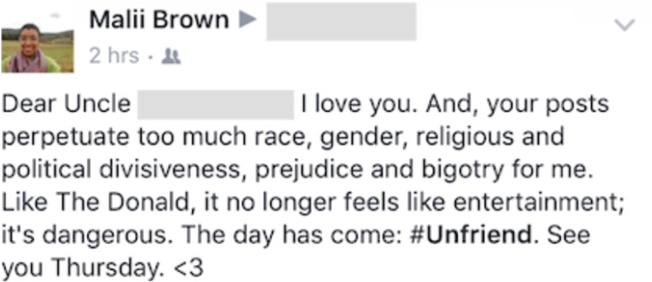
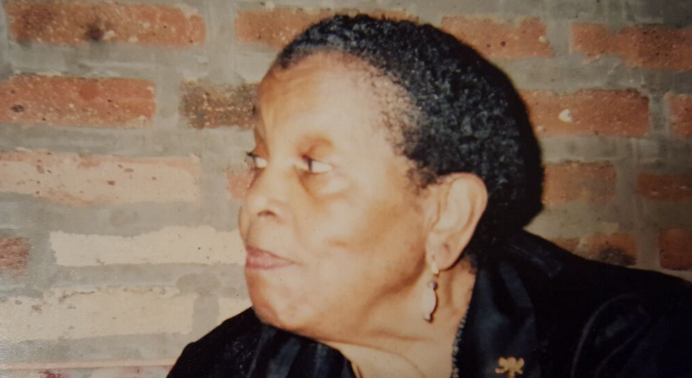
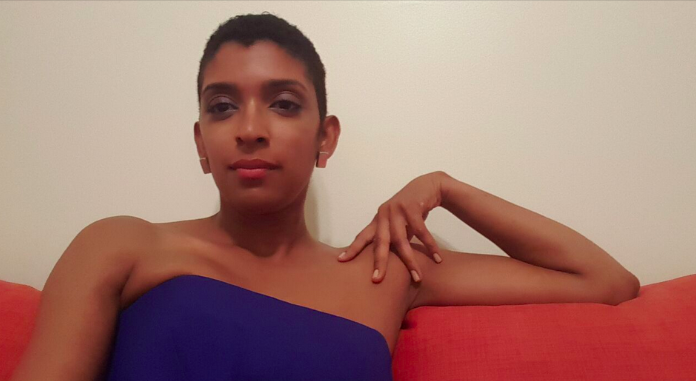
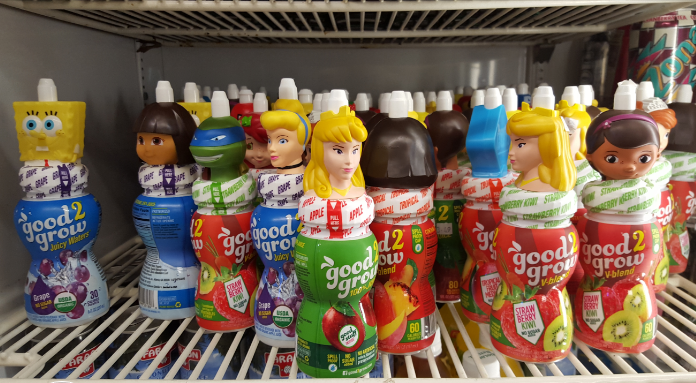
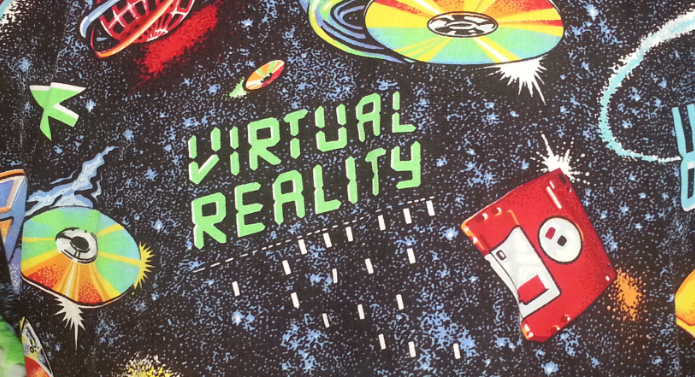
 RSS Feed
RSS Feed